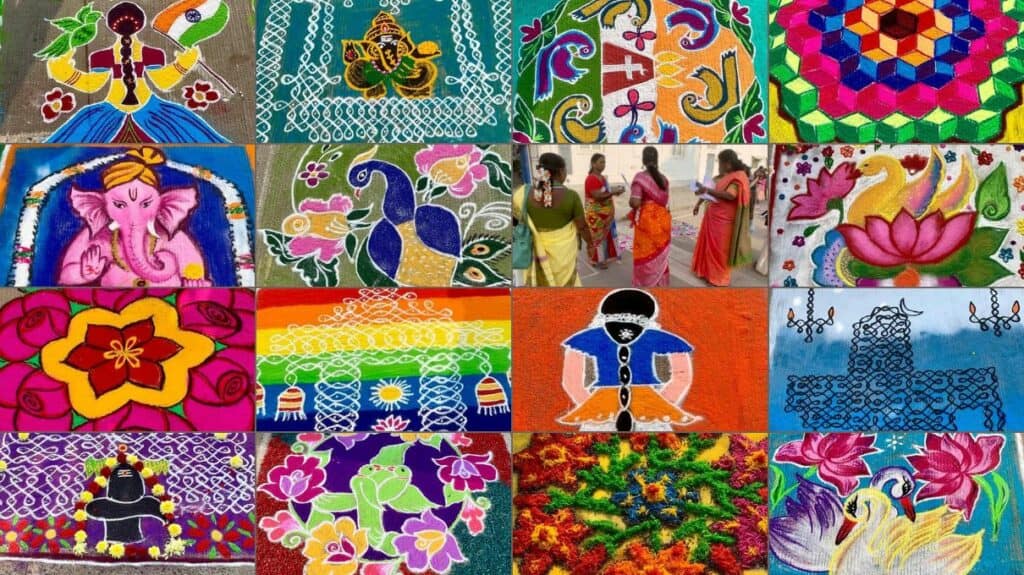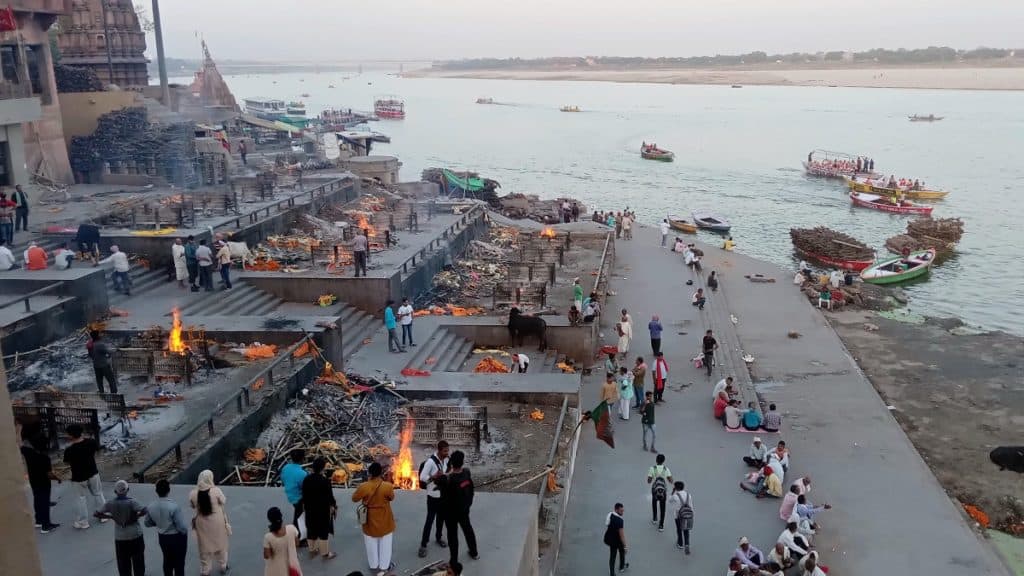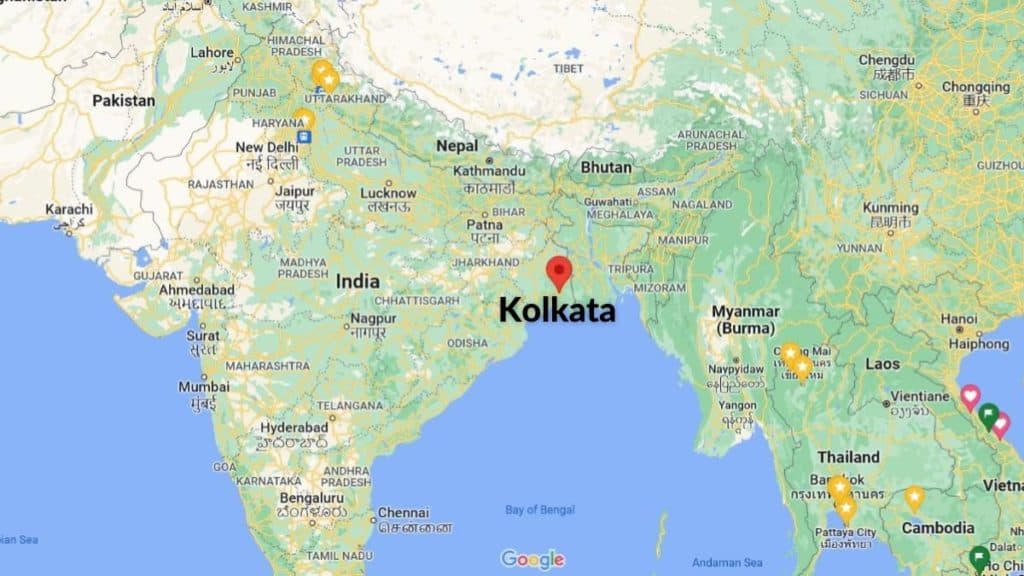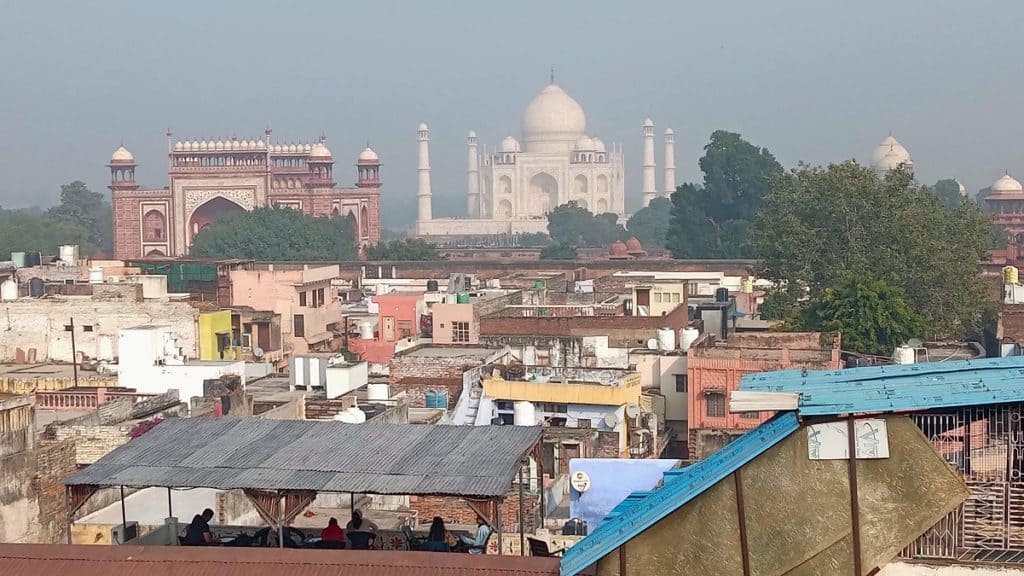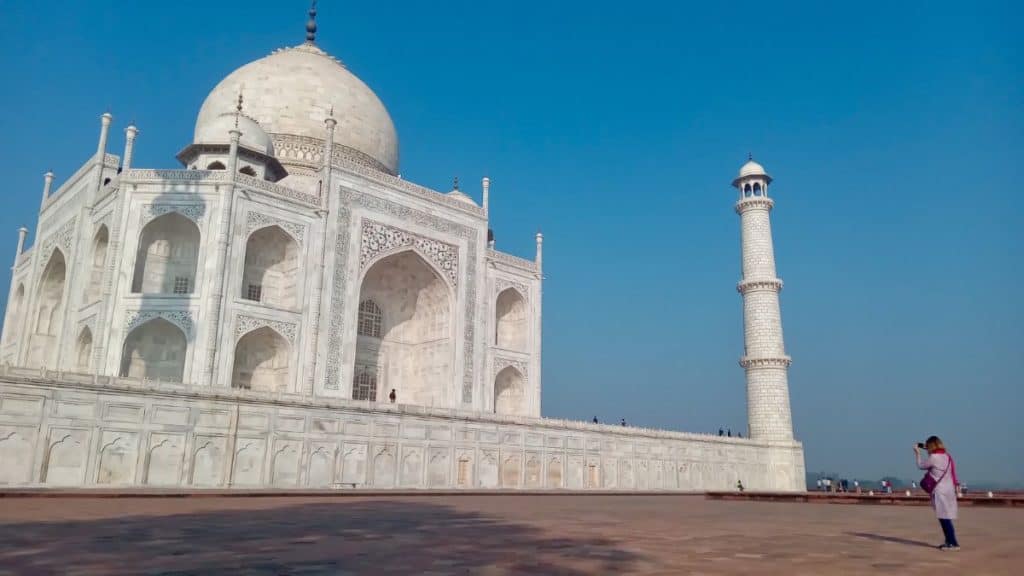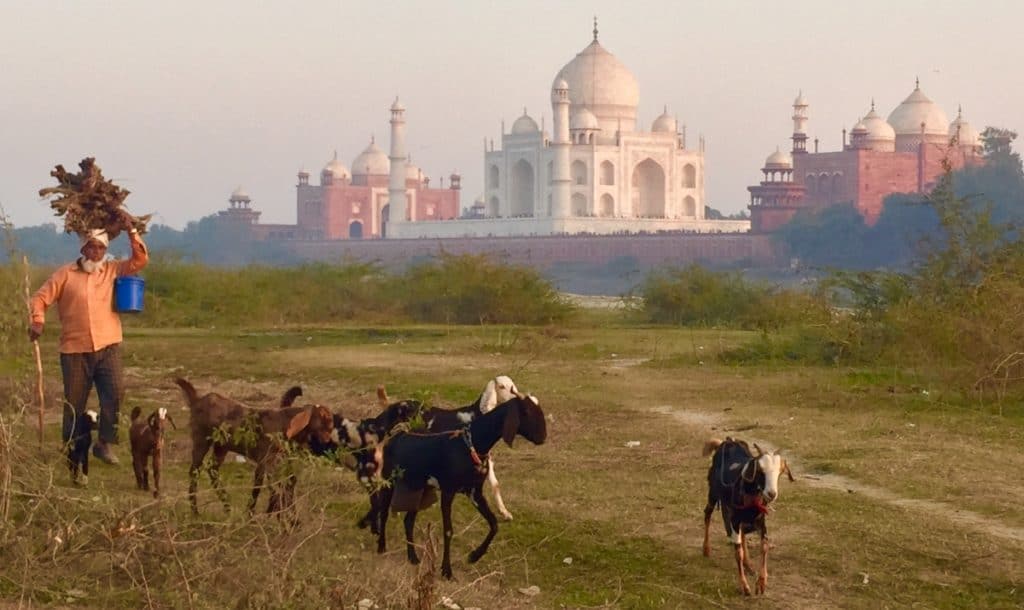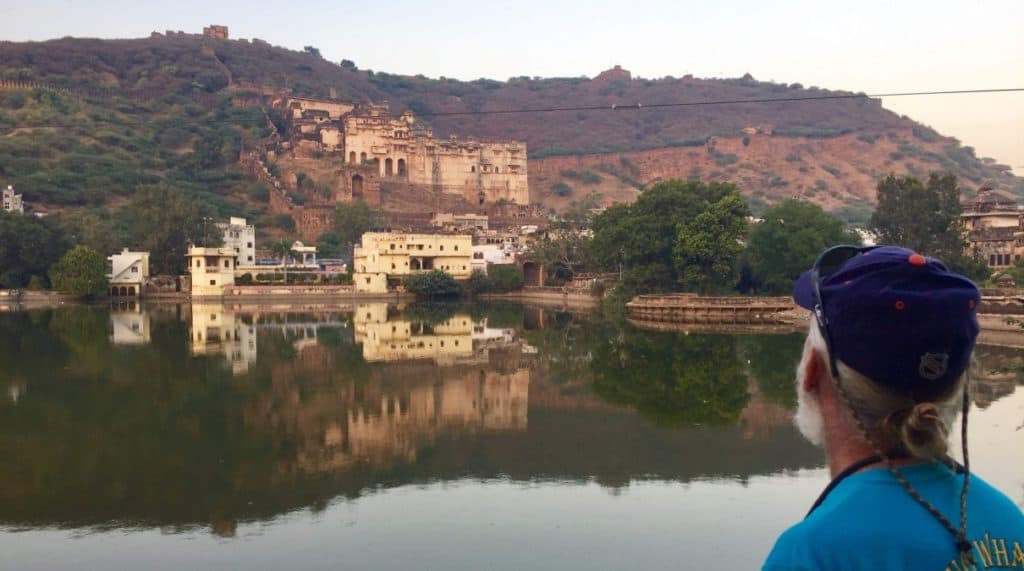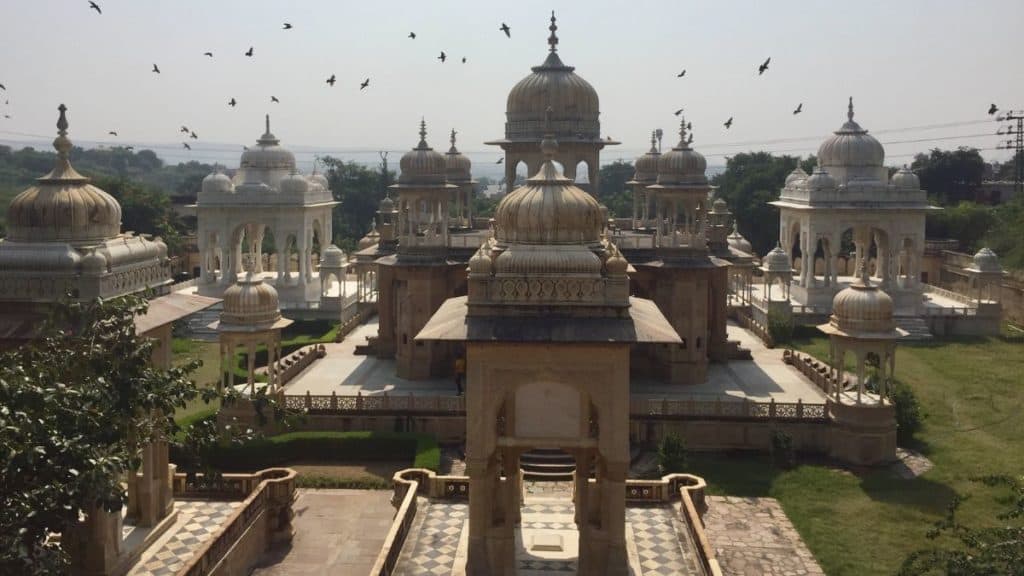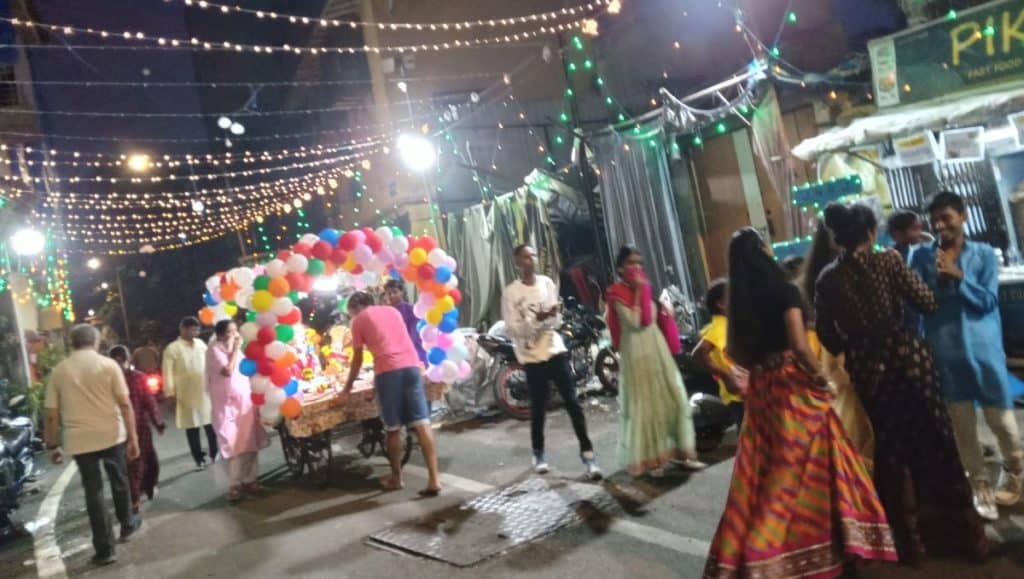This is a travel story about what I learned from an art competition in Puducherry. It was a humid morning where I saw impermanence and tolerance on display, along with Hindu pride and nationalism.
Kolam is a traditional art form in Southern India. It originally featured geometric patterns drawn with white chalk or rice flour by women on the ground outside their homes. The designs are believed to bring prosperity and good luck.
In modern times, kolams feature gods, birds, flowers, etc. — often in a geometric arrangement in colors as vibrant as India Herself.
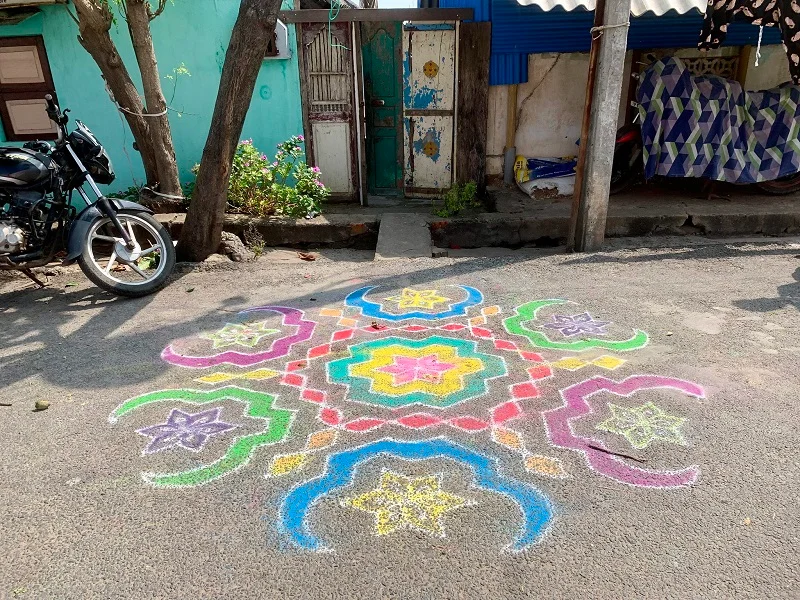
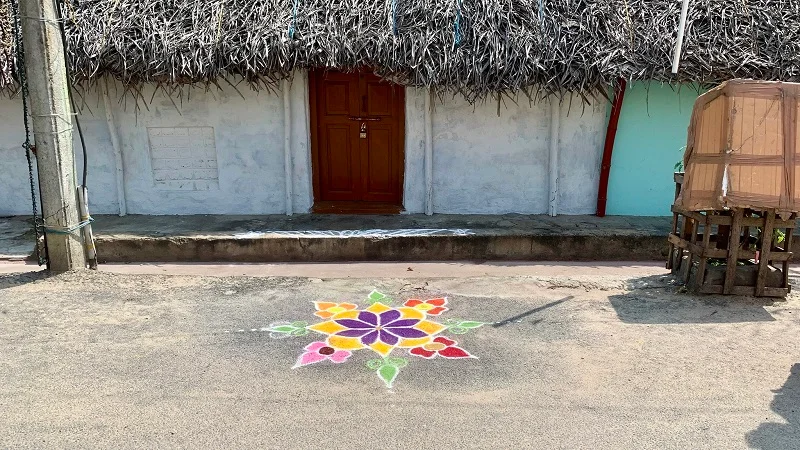
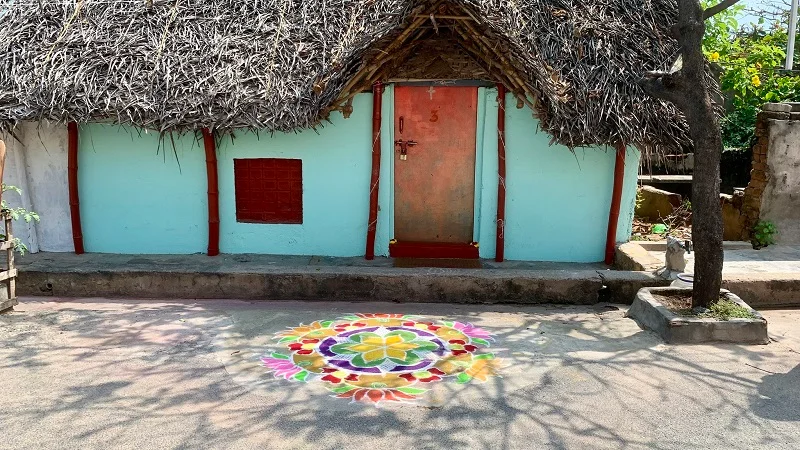
Kolams also serve as reminders about the universal law of impermanence. Traffic, pedestrians, animals, insects, and elements erase the powdered artwork, so the drawings must be redone every day. But it’s deeper than that: impermanence teaches acceptance of change and detachment from material attachments.
Every day I see the neighborhood women outside their homes in our temporary slow travel neighborhood, working on their designs. First they sweep the area, then douse water on it. Wet pavement holds the dry powder to make it last a bit longer.
One day, most of the women were absent, the previous day’s designs faded and abandoned. When I got to the pedestrian-only ‘beach road’ where I normally jog, I saw why: there was a big competition on that street.
They had from 6 a.m. to 7 a.m. to create their artwork for the judges. I got in some exercise, and then returned at 7 to see the finished results. One design really caught my eye and I watched as the artist finished laying down the last bit of powder just as the announcer said ‘time’s up’!
Her kolam was my favorite bet for first place. I told her she would win. She smiled and thanked me.
I raced back to our Airbnb to get Mom Diane for the winning announcements. I figured she’s appreciate the display and competition just as much.
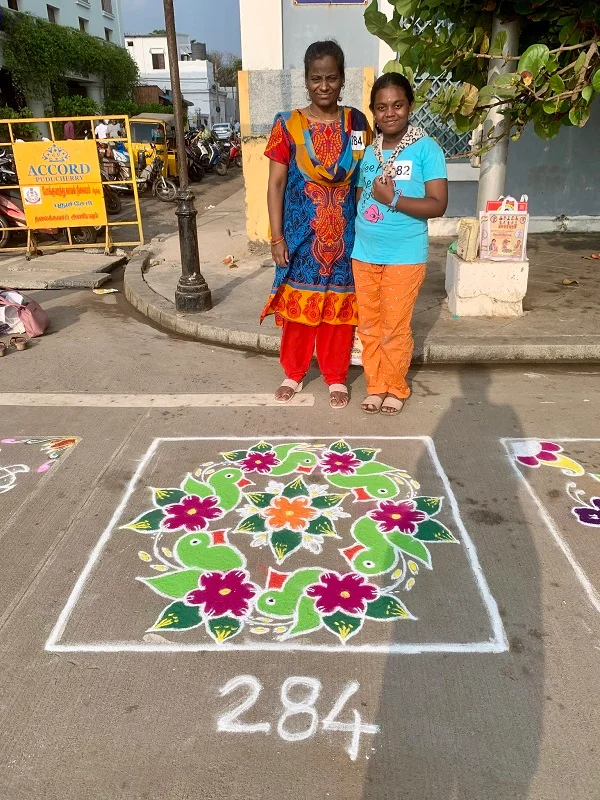
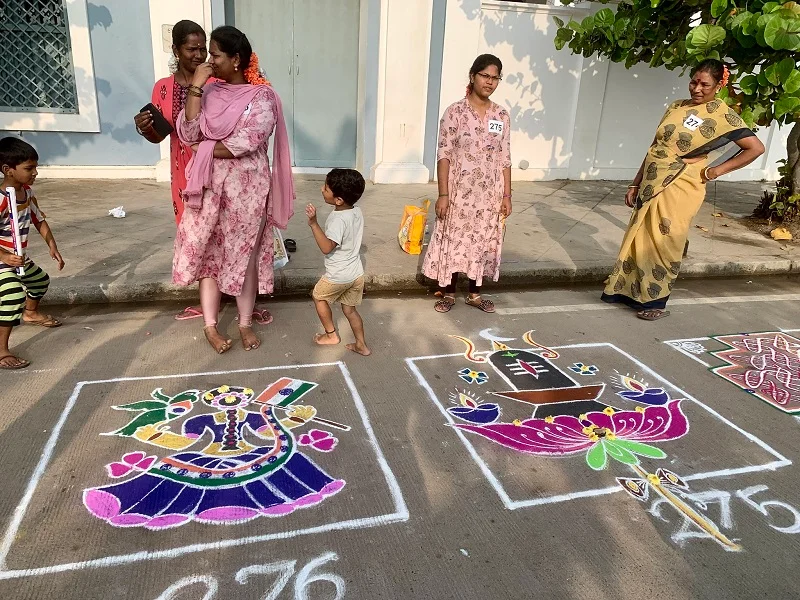
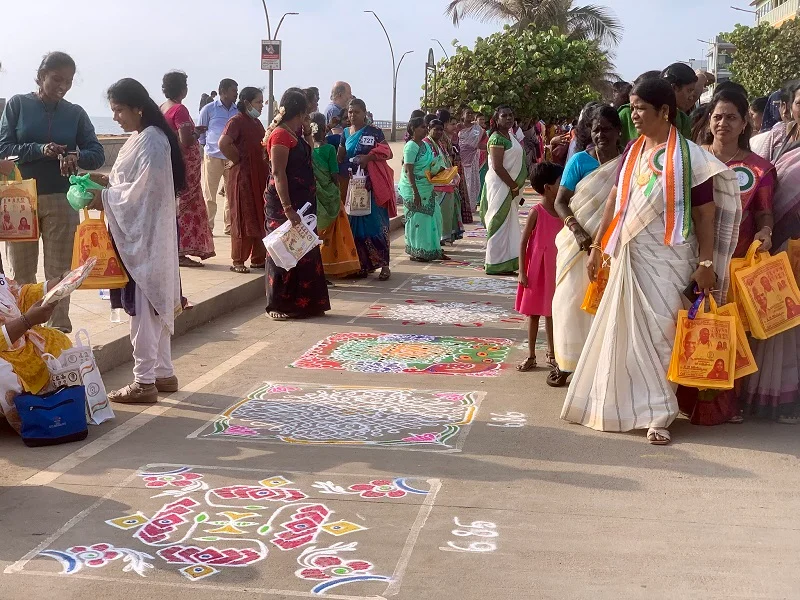
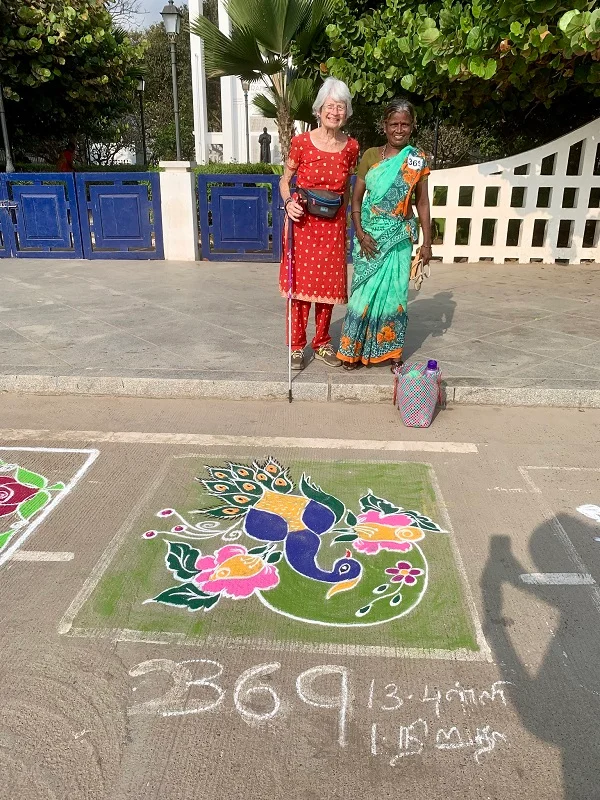

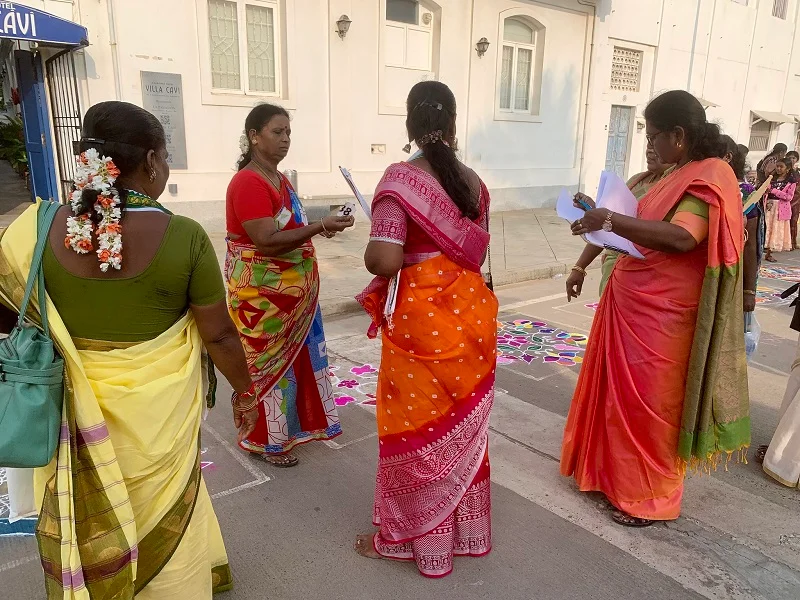
We wandered up and down the road to look at hundreds of entries. An organizer told me there were 1,000 entries. We met some sisters with art entries side by side, mothers and daughters right next to each other, while the occasional supportive husband lingered in sparsely shaded sidelines.
Mom Diane and I both had our favorites – for design, for theme, for talent. However, after looking at all of the entries, I still believed the design I saw finished right at 7 a.m. would win the judges’ hearts. Some of the judges are pictured above in the last photo – they are Hindu women dressed in traditional garb.
We had tea and waited for the winning announcements as bands and singers kept everyone entertained. Eventually, two hours later, politicians arrived and ascended onto the stage. It was time for the big reveal.
Can you guess which one came in first place? Second? Third? (Tap/click any image on this post to enlarge.)
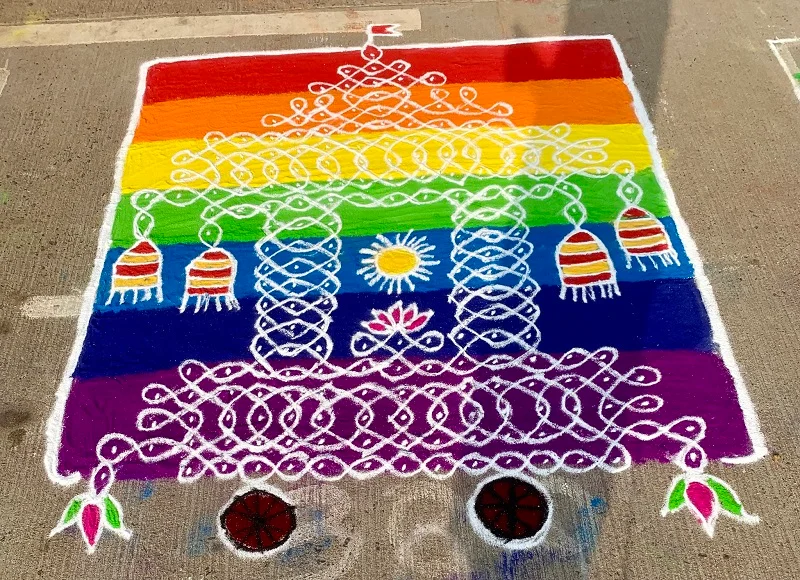

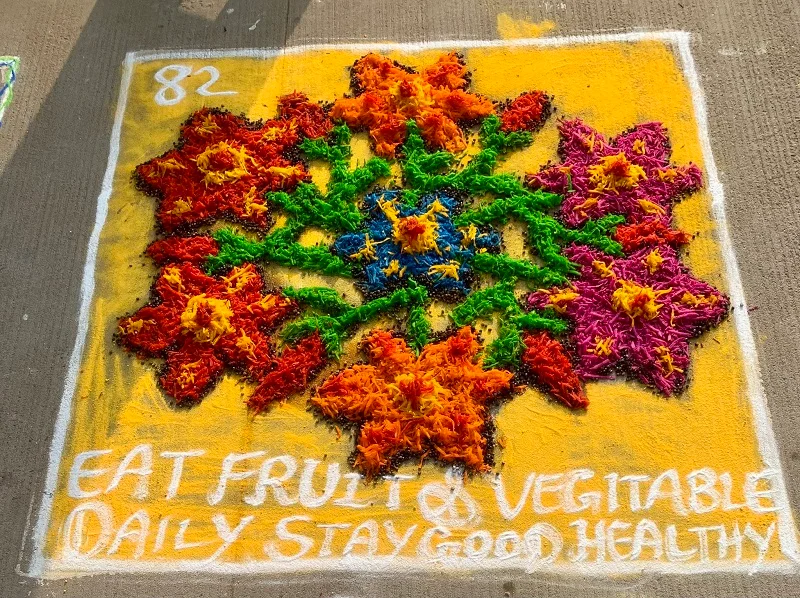
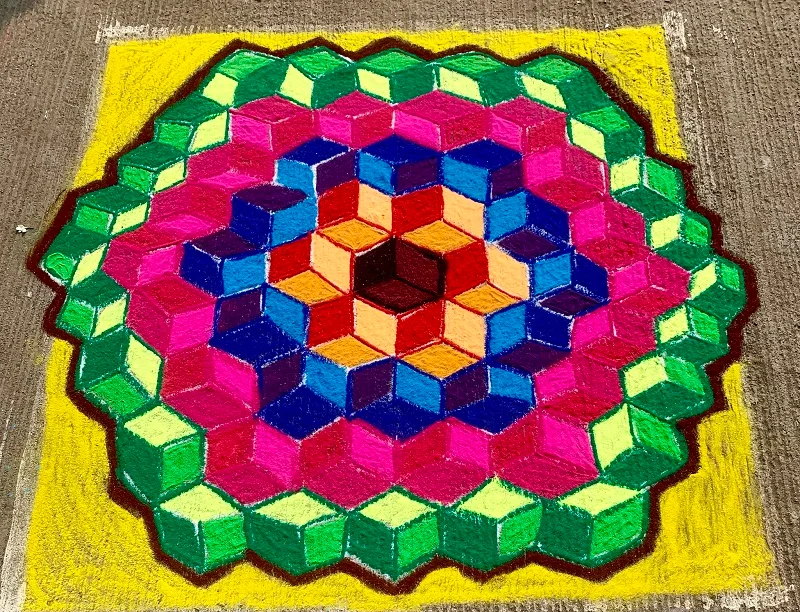
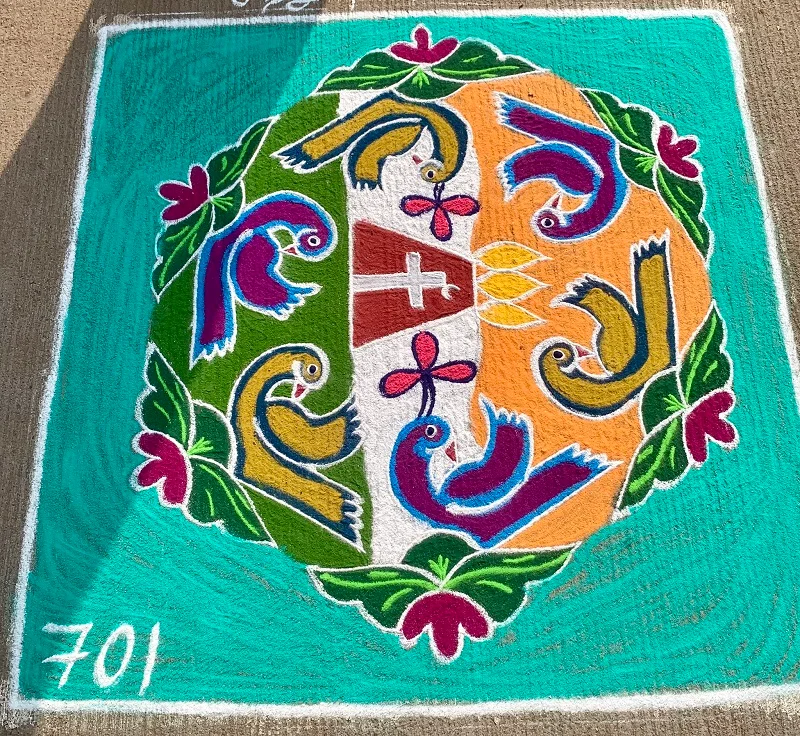
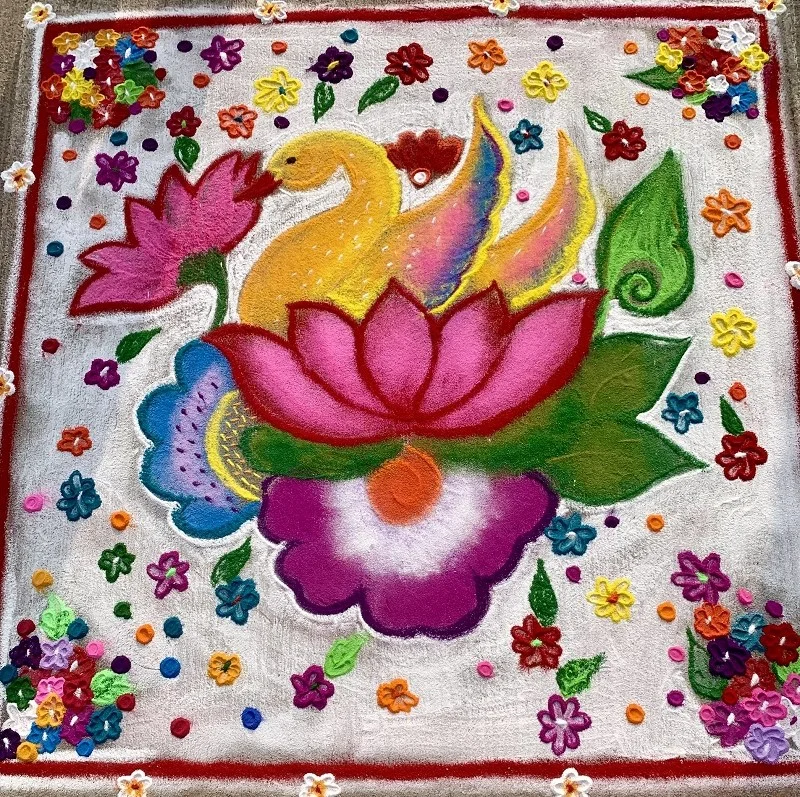
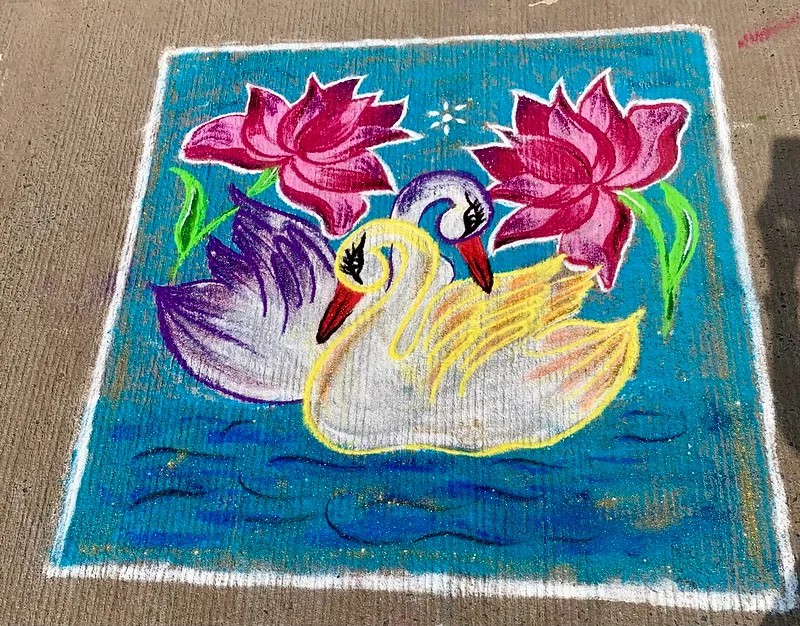
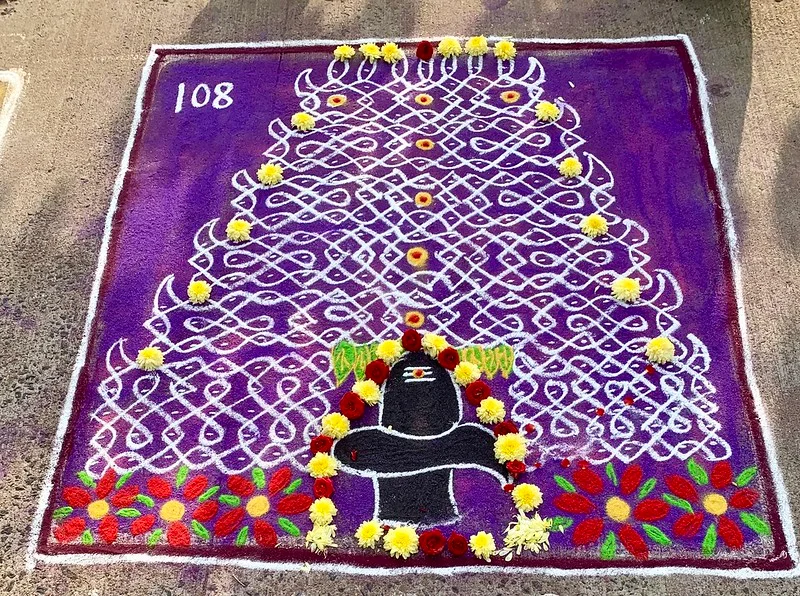
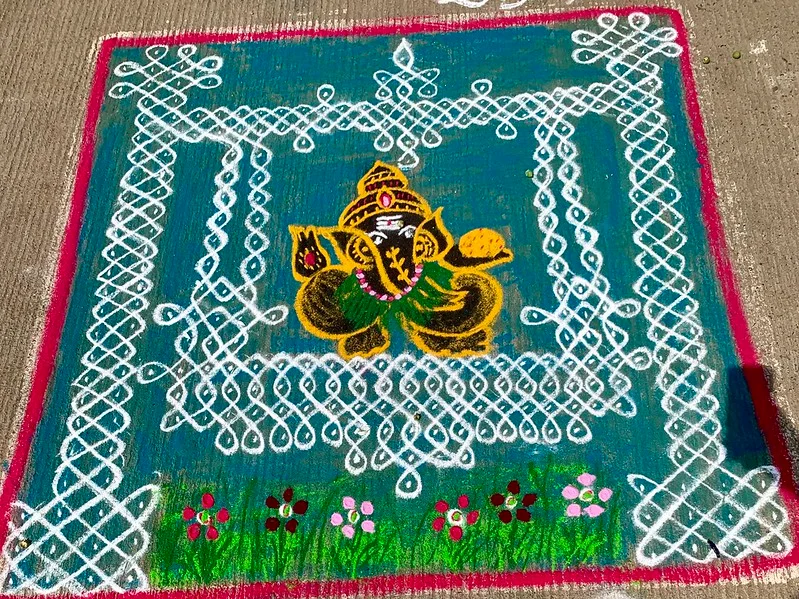
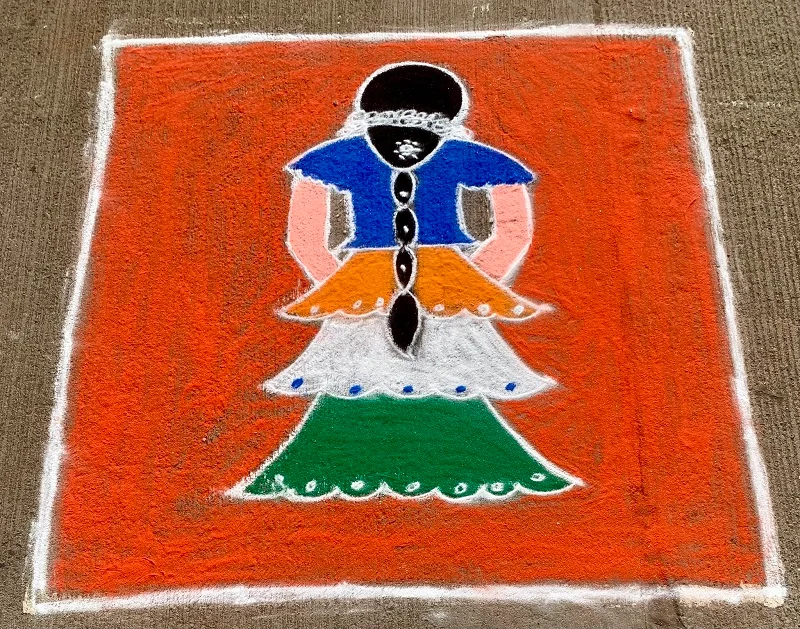
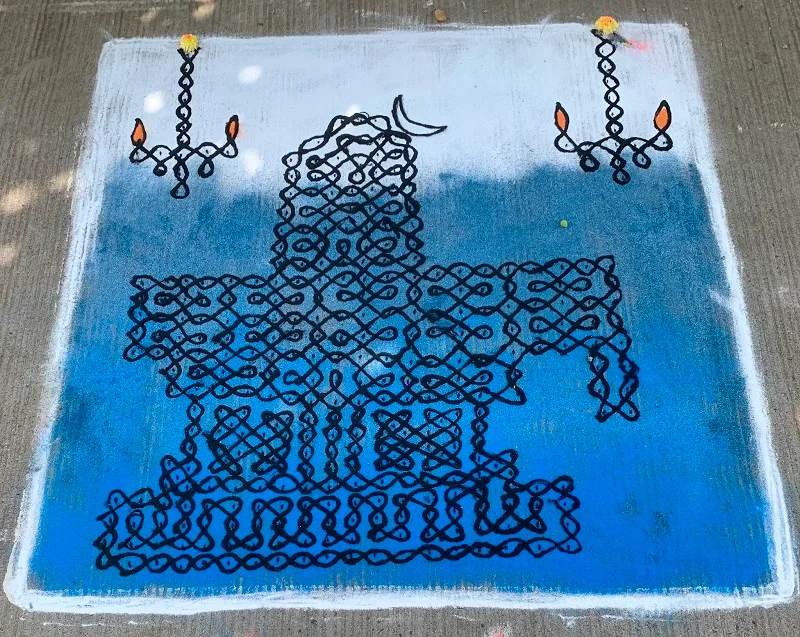
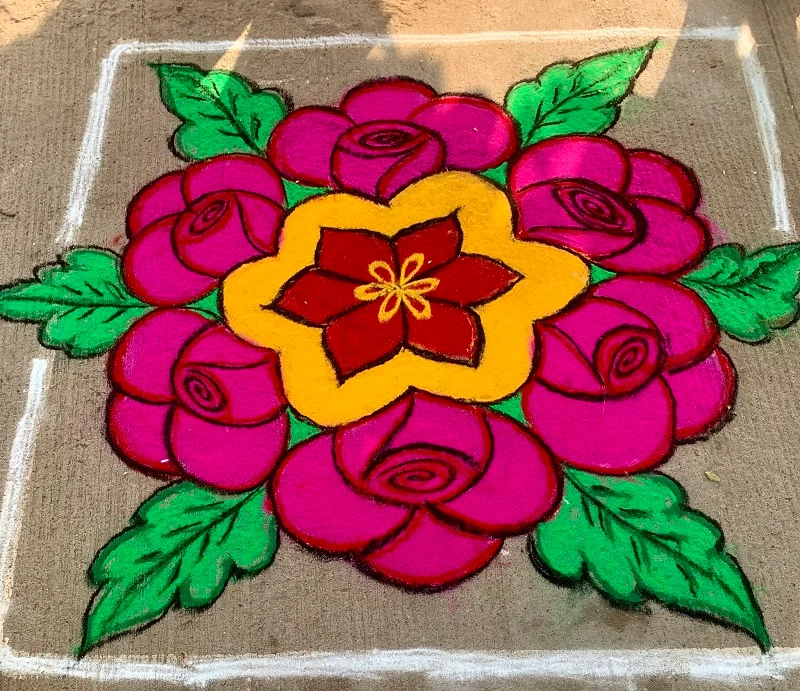
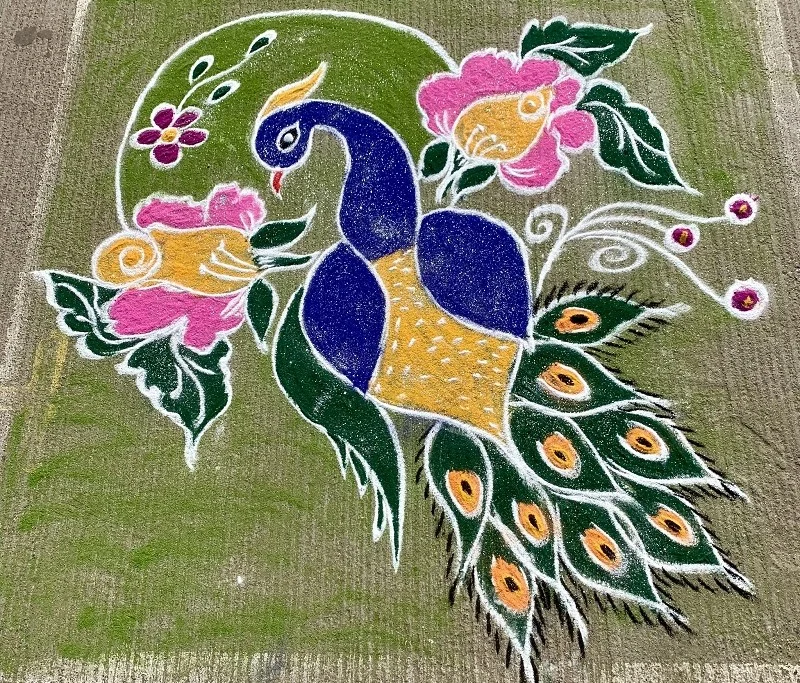
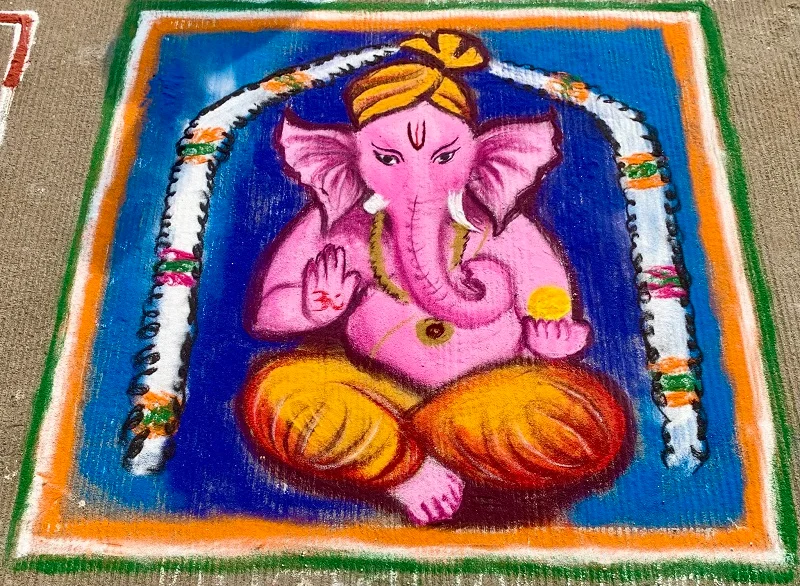
I do not know the criteria for the judges. I do know there were ten different categories, which might explain why there were geometric patterns, birds, nationalist themes, etc.
First place won a smart TV. Second place, a washing machine. Third place, a refrigerator. These are great prizes for the women from modest homes who we met on this day.
Well, the woman with the design I said would win, did indeed win! She came in first place. And she asked me to take a picture with her in front of her new smart TV.
Hers was the Ganesh design. Ganesh is one of the most worshiped Hindu gods. As soon as I saw it – it screamed “HINDU INDIA” to me. And to the judges, too, apparently.

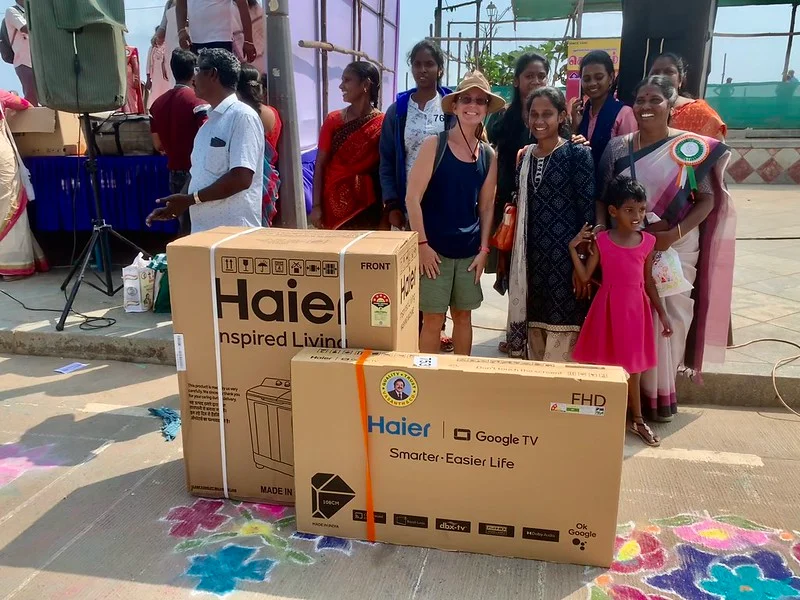
The second and third place winners are pictured below, respectively. These images are more traditional kolams with predominant geometric designs. Note another variation of Ganesh in the second place kolam.


Kolam, also called rangoli in other areas of India, is a way for women to reflect their values and beliefs. While creating the art, some women pray and meditate. It’s also a way for women to connect to each other and their cultural roots.
Hindu is the overwhelming majority in India. It is a ‘Hindu First’ mentality for a vast majority of Indian citizens. This is, of course, partly why I thought the Ganesh design would win.
I learned a lot on this day, and I appreciate what this kolam competition showed me on many levels.
Mom Diane and I have different favorites for artistic design, shown below left and right, respectively.


*We shared a favorite kolam for theme — the one that expressed tolerance, pictured below.

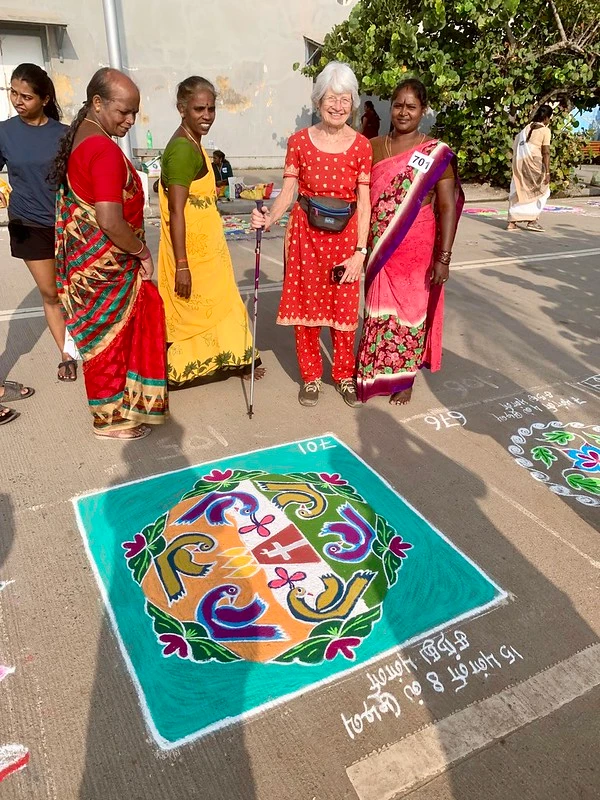
The creator was a lovely woman who was was delighted to talk with us about her concept. We appreciate her art and values. Art imitates life.
If only more people all over the world were more tolerant of others and their differences…
Thanks for reading, “Kolam and impermanence, nationalism and tolerance on display.”
Keep reading about India:

3 Best countries in Asia for new budget slow travelers
Ellen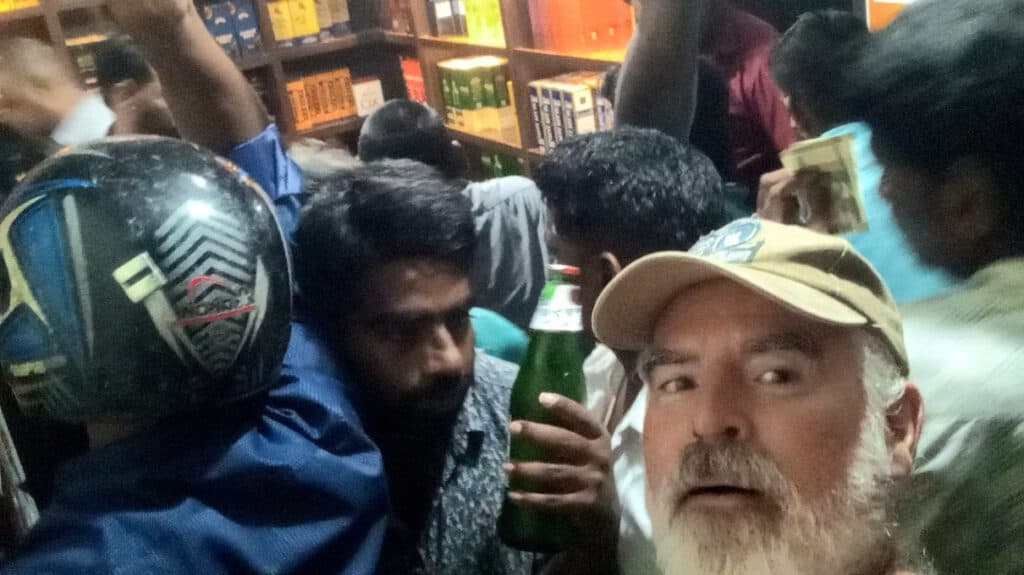
Buying beer in India: ‘Wine shop’ realities
Theo
Kortn’s Crib Auroville + 6-month roundup in southern India
Theo
‘Accessible Auroville Bus’ & other bits from ‘City The Earth Needs’
Ellen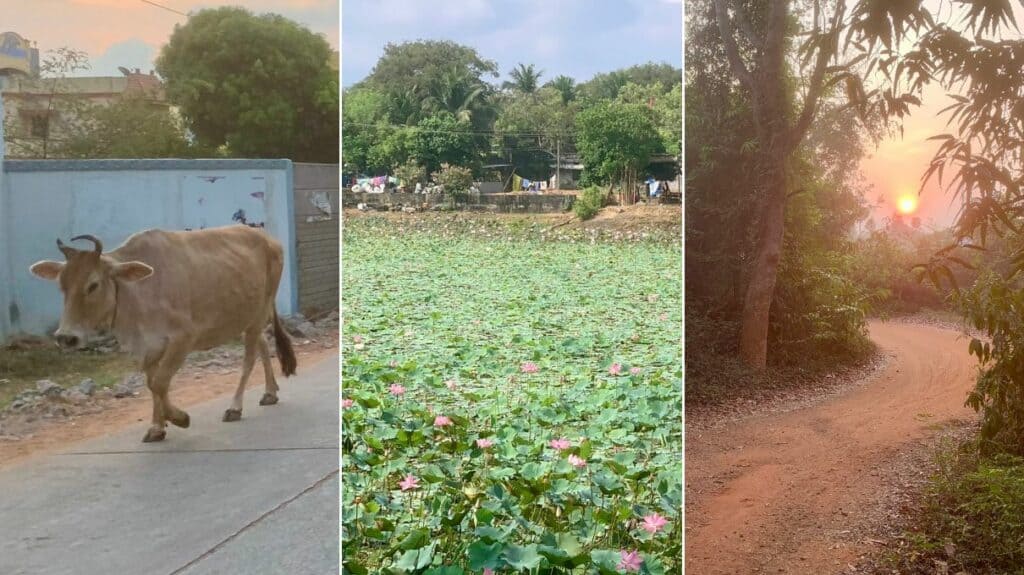
What it looks like outside Auroville, the experimental community for ‘Human Unity’
Ellen
Exact healthcare costs for Americans in Chennai, India
Theo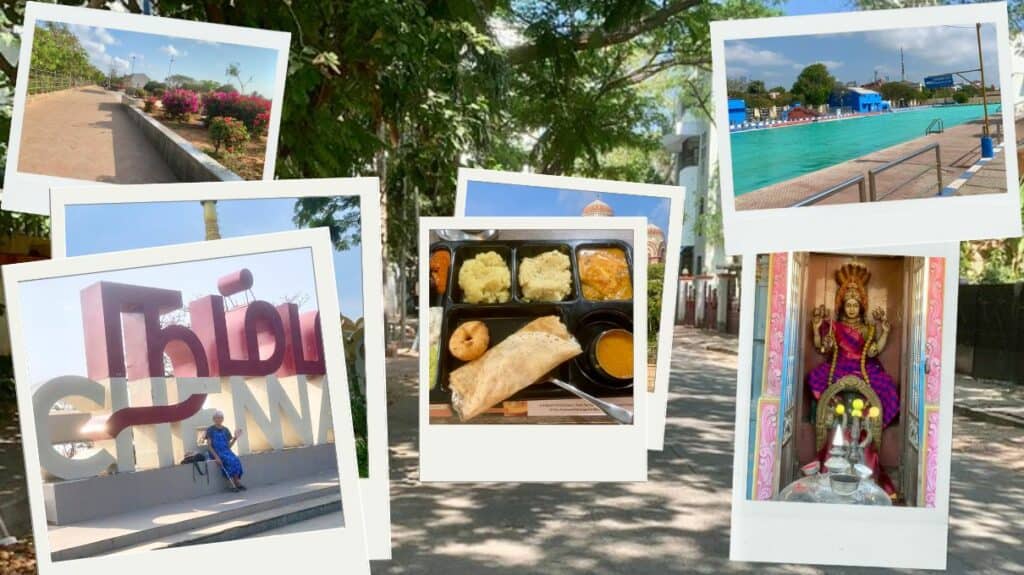
13 Favorite things in Chennai (and how to survive the heat)
Ellen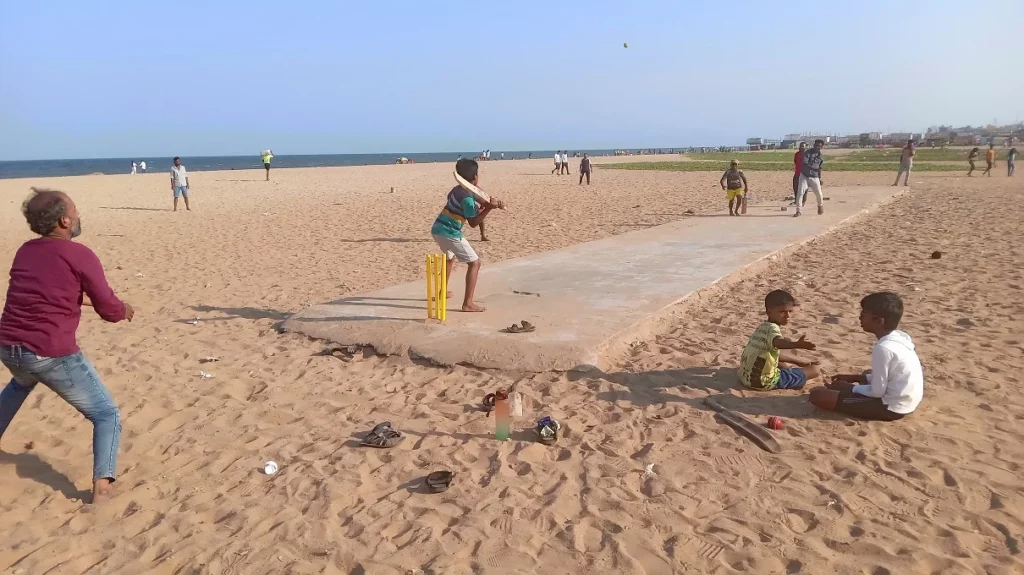
Cricket-crazy Chennai – Tedly’s becoming a fan
Theo
Healthcare in Chennai for budget slow travelers in early retirement
Ellen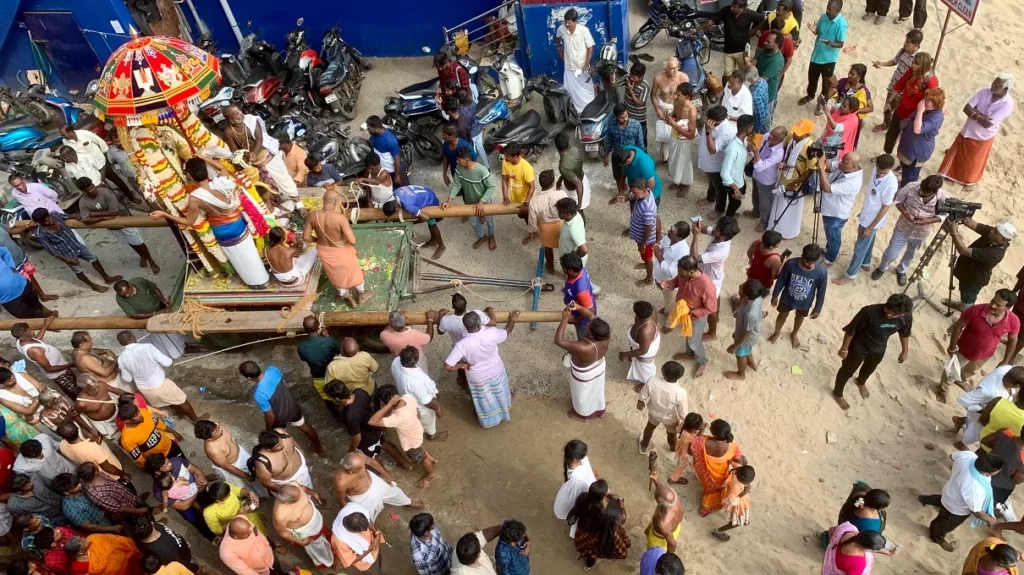
Absolution on Masi Magam Near UNESCO site in Mahabilapuram
Ellen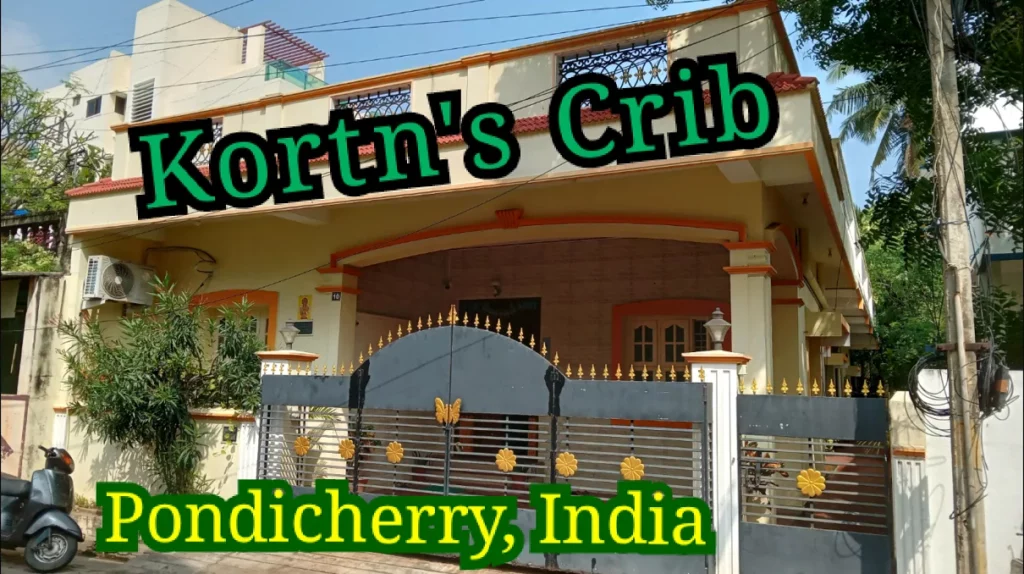
Kortn’s Crib: Puducherry Airbnb video tour
Theo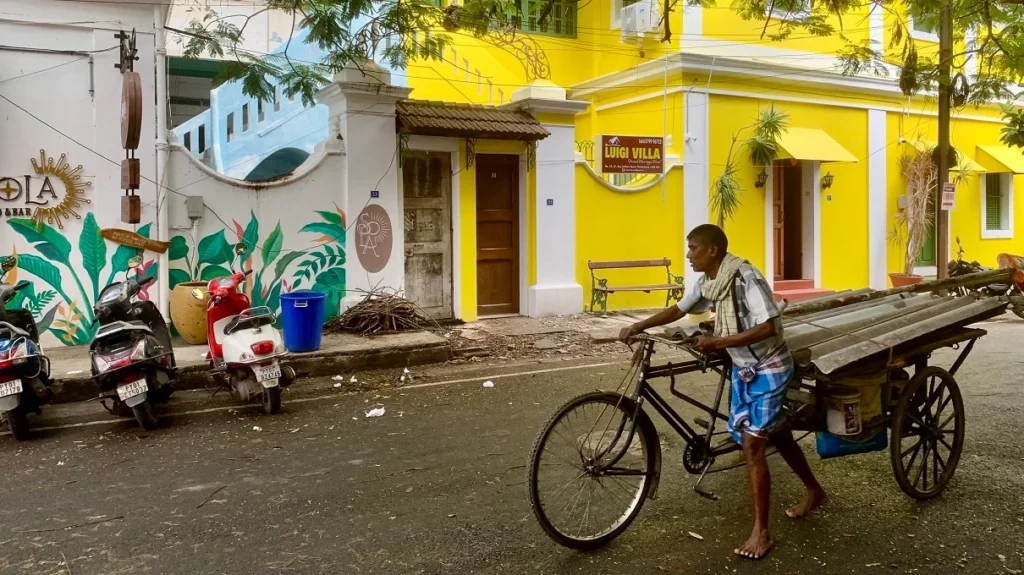
Puducherry, Pondicherry, Pondy – whatever you call it – is a cool place
Ellen
North Goa vacation from our vacation lifestyle
Ellen
South Goa beaches are the best in India IMHO
Ellen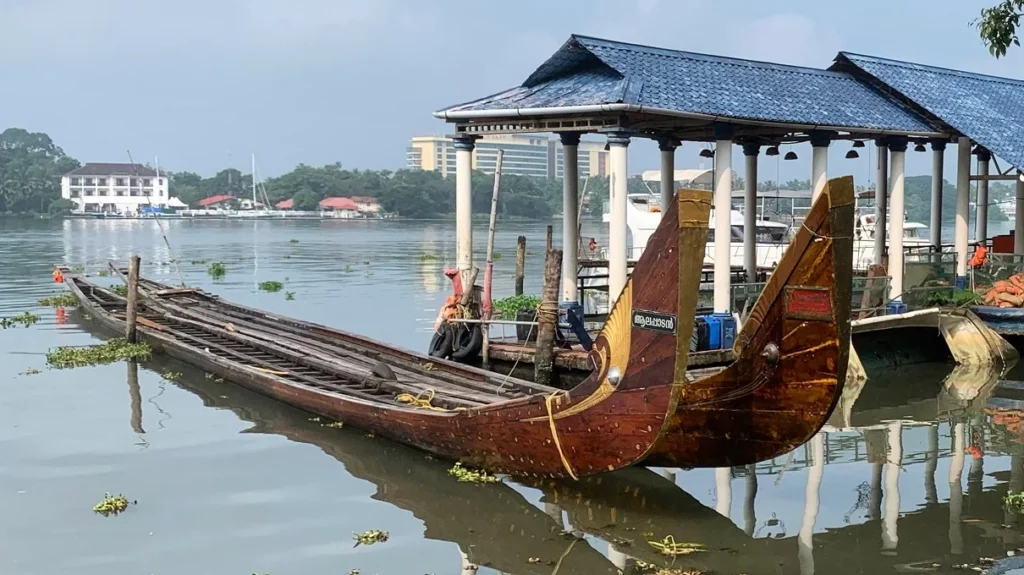
Charming Kerala in Southern India
Ellen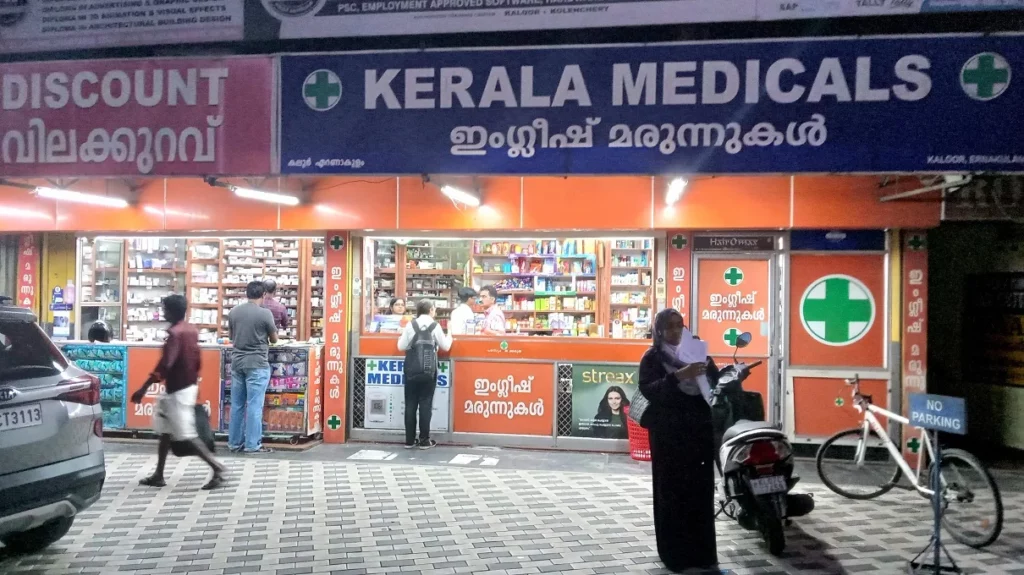
India medical treatment cost & travel update
Theo
4 ‘Giving Tuesday’ gifts that I know for a fact will really help people
Ellen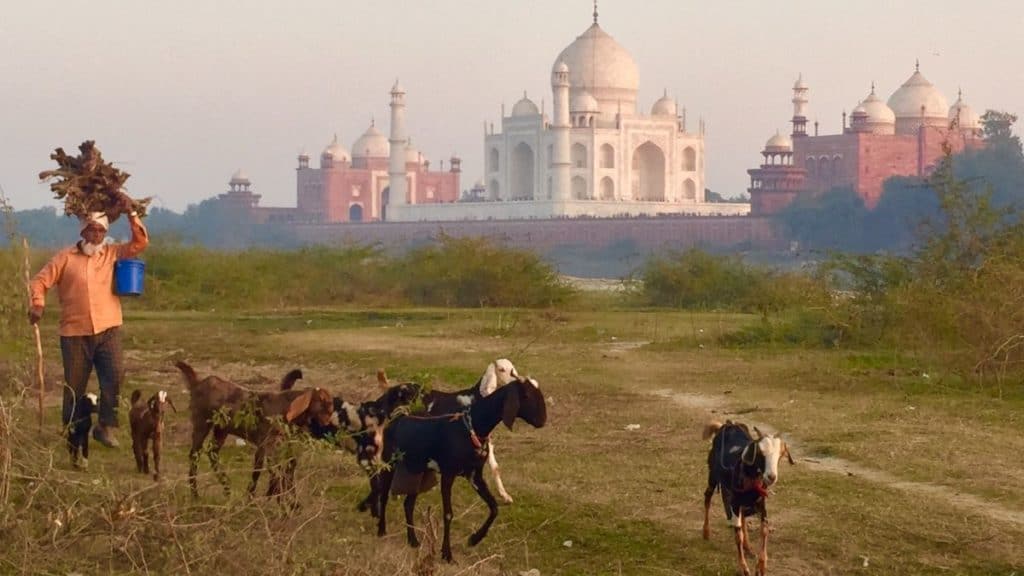
Free guide for budget slow travel in India
Ellen
You won’t believe the price of progressive eyeglasses with Crizal lenses in India
Ellen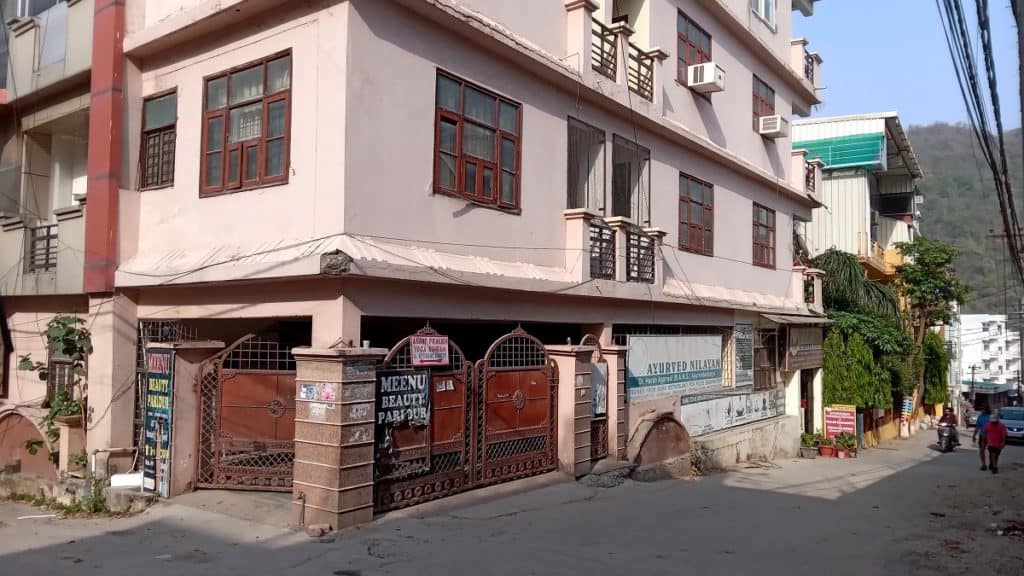
Kortn’s crib: Video tour of Rishikesh apartment
Theo
Unique yoga school in Rishikesh has excellent story
Ellen
Vipassana meditation retreat as an American in India
Ellen
What it cost us to travel in Asia for 1 year
Theo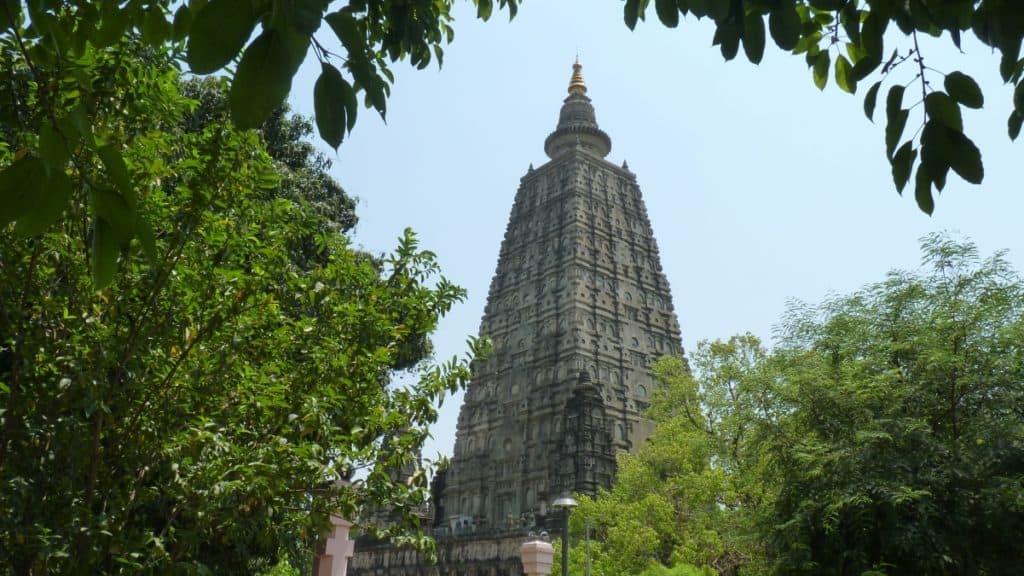
Bodhgaya and the Buddhist Circuit in Bihar
Ellen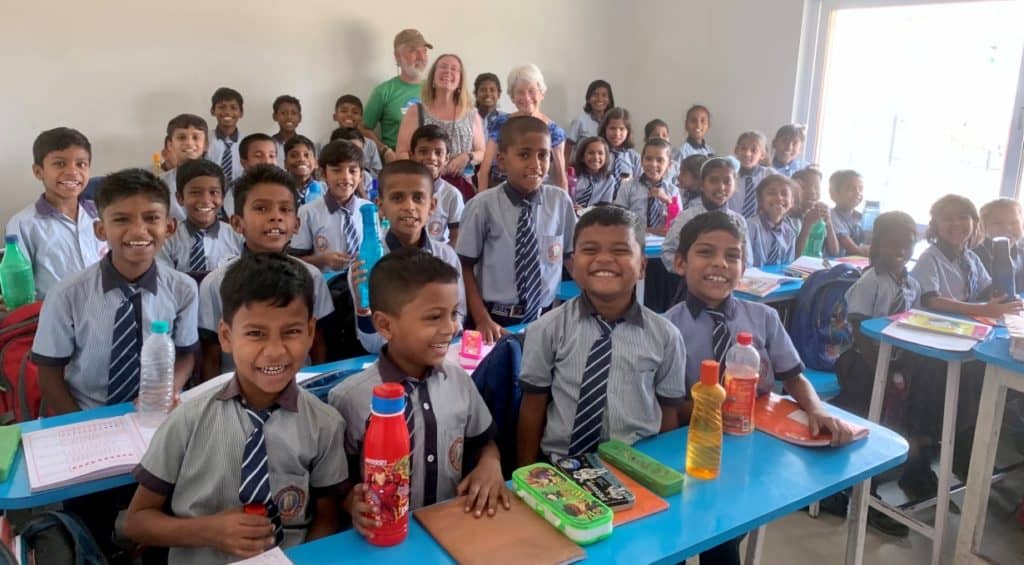
Shanti India School in Bodhgaya is impressive
Ellen
Rishikesh to Pokhara: Border crossing with a plot twist
Ellen
Whitewater rafting, waterfalls in Rishikesh
Ellen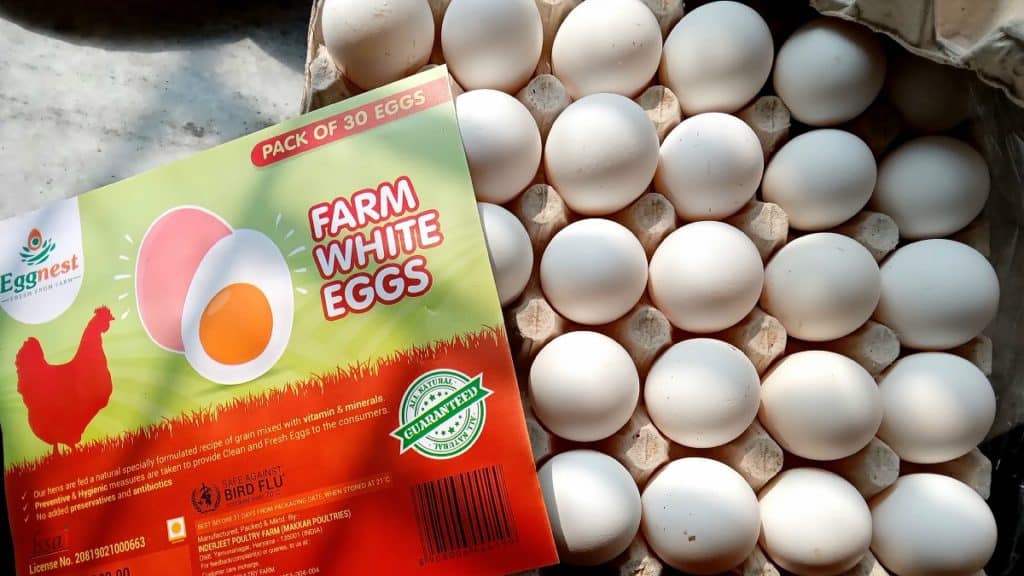
Food prices in India for slow budget travelers
Theo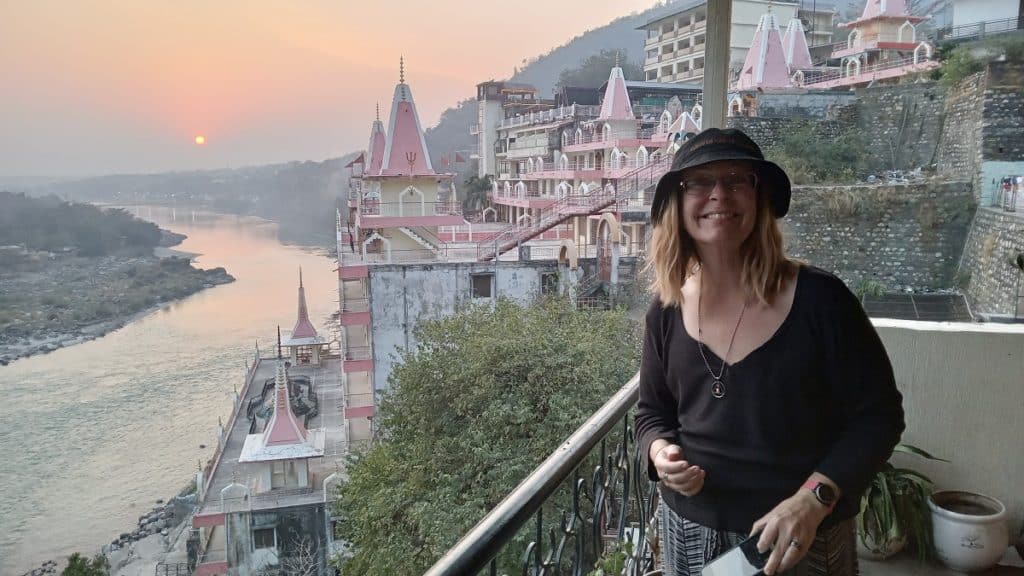
Cancer scare and emergency root canal in Rishikesh
Ellen
What it cost to live in Chennai as budget slow travelers
Theo
Temporary ferry at Laxman Jhula in Rishikesh
Ellen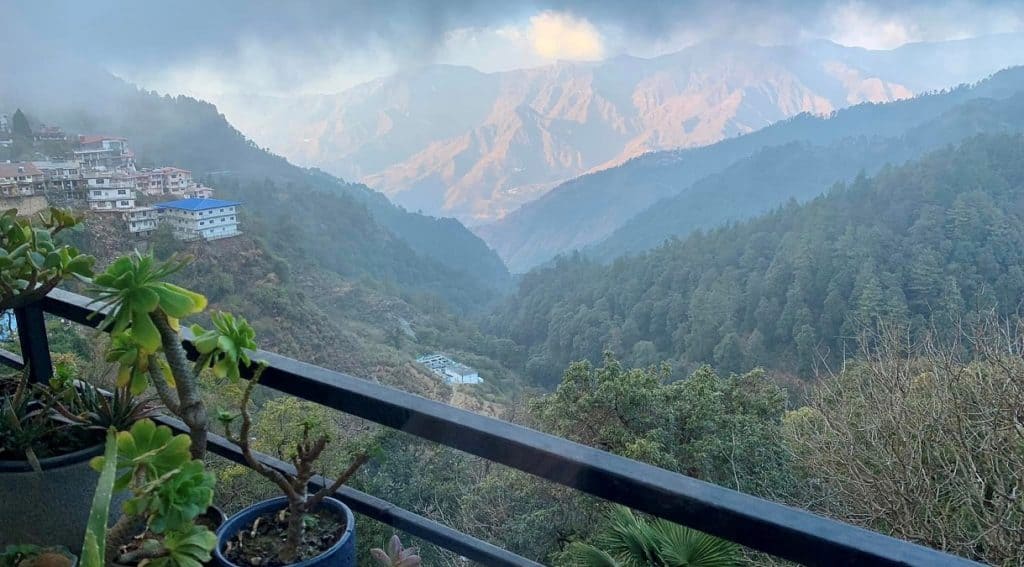
Delhi, Dehradun, Mussoorie budget travel tips
Ellen
Tamil Nadu beach review – and Puducherry, too
Theo
See Kortn’s Crib in southern India
Theo
Train travel in India beats flying — if you have time
Ellen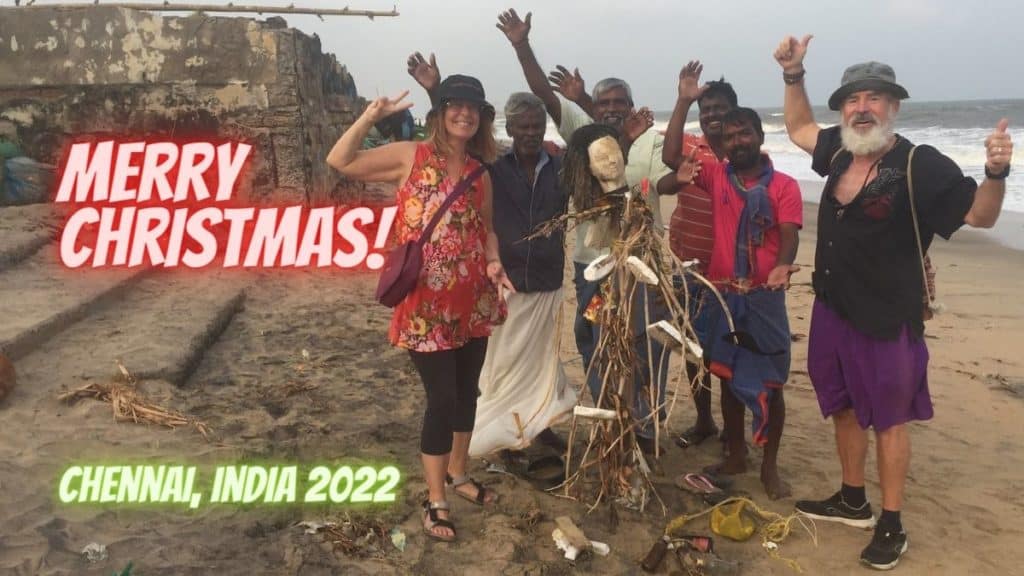
Hindu helpers for this year’s trashy Christmas tree
Ellen
Why Pushkar Lake is a fantastic destination
Ellen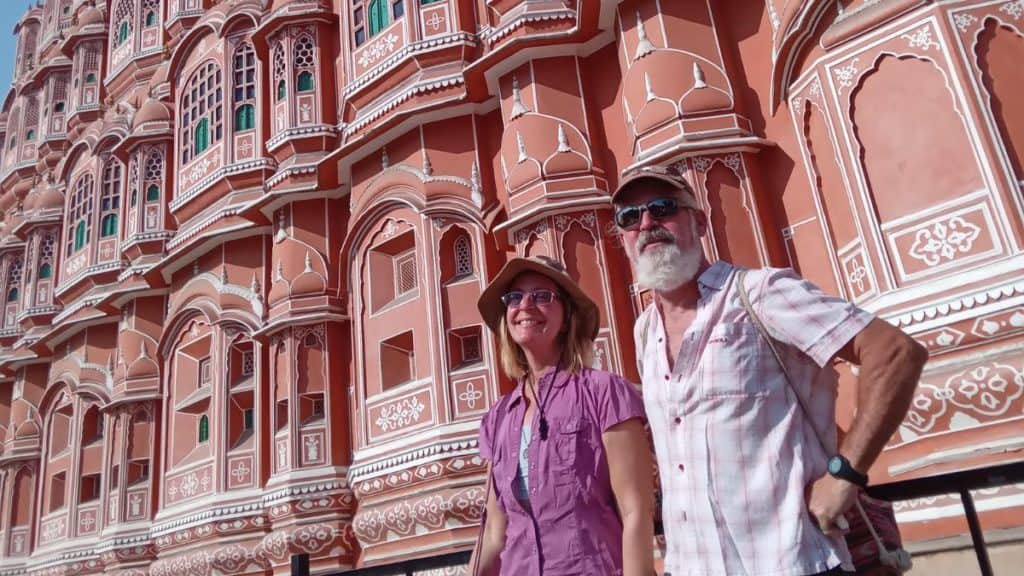
India trip: Under budget, low cost of living
Theo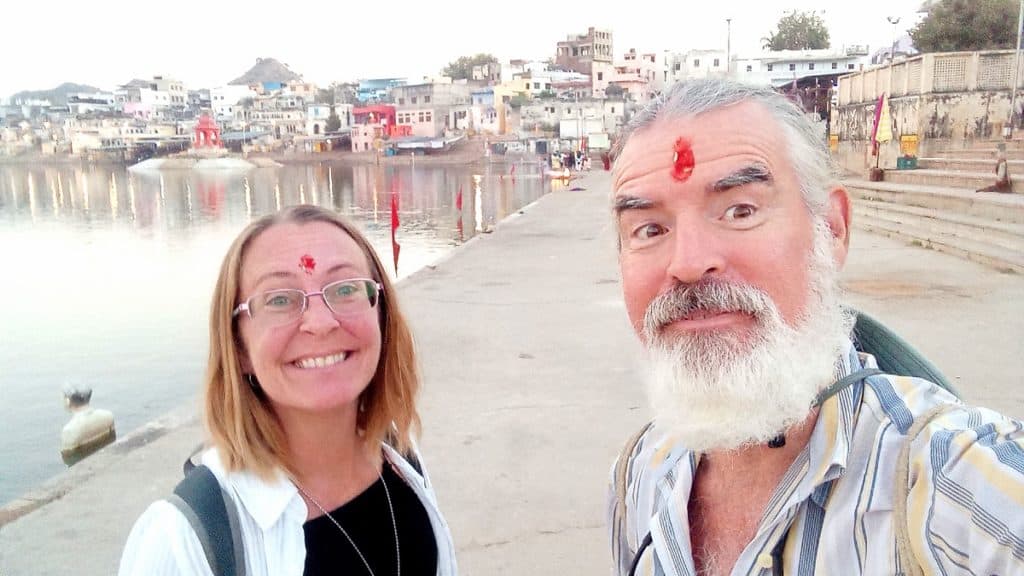
Thanksgiving thoughts from a world traveler
Ellen
Ultrasounds in India: Expat reviews Ovale Diagnostic Centre
Ellen
Dissecting days of dengue fever in India
Theo
Thar Desert camping near Jaisalmer
Theo
A different type of slow travel expense report
Theo
Old forts and beaches in Alibag, India
Ellen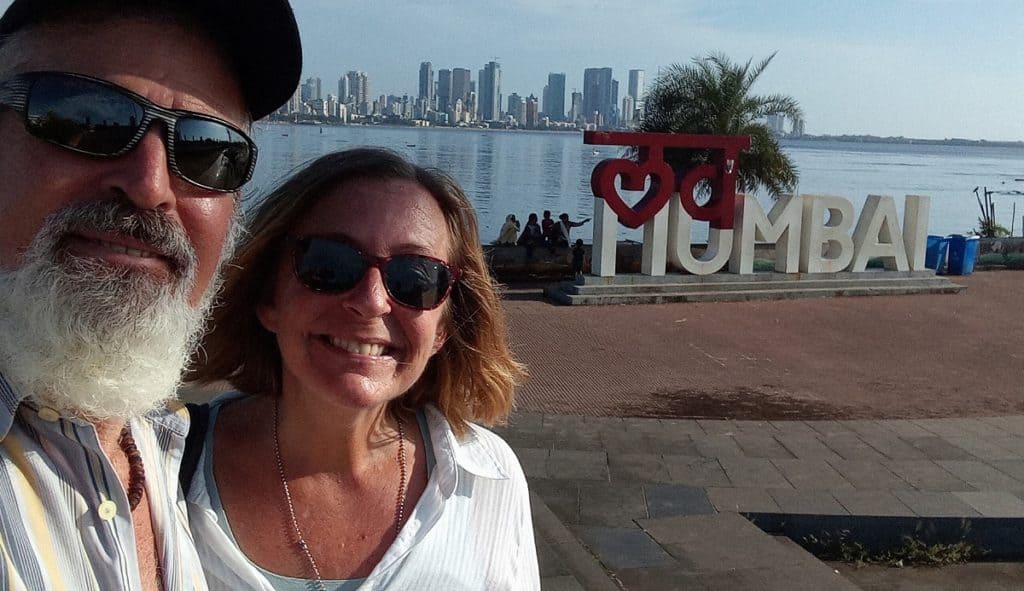
10 Free things to do in Mumbai that are fun & safe
Ellen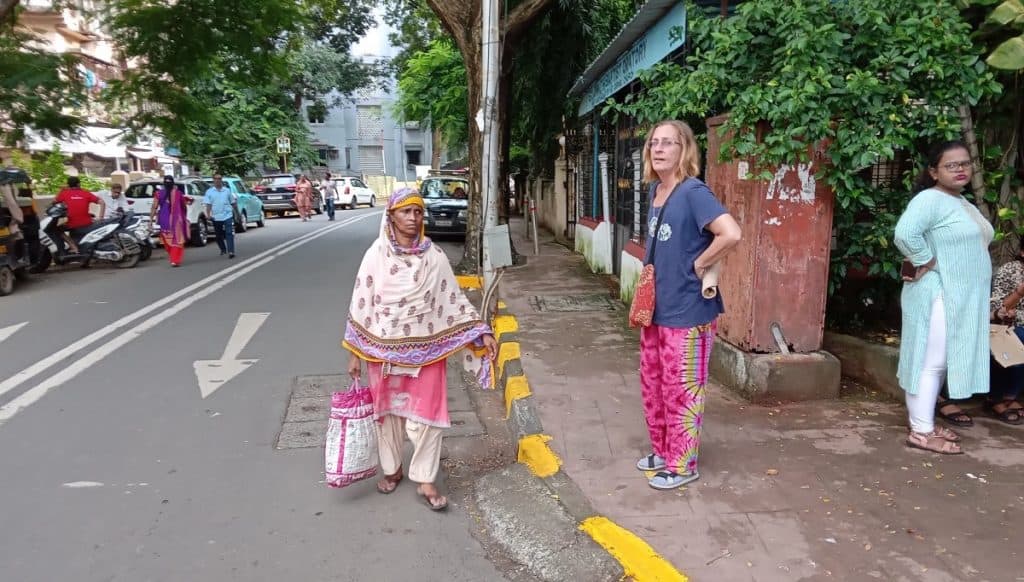
Contradictions in Mumbai – travel notes
Ellen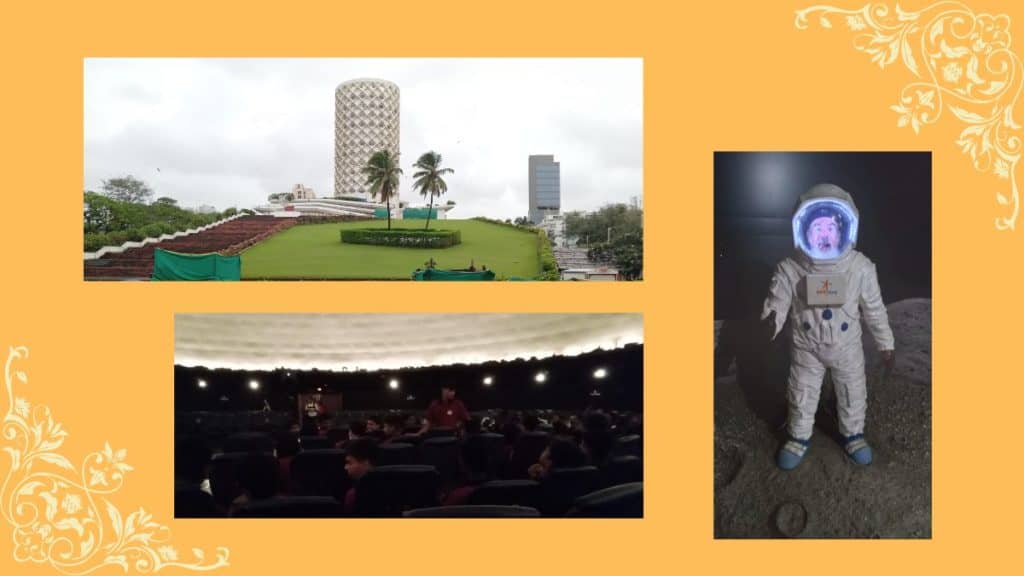
Don’t miss: Nehru Centre in Mumbai
Ellen

